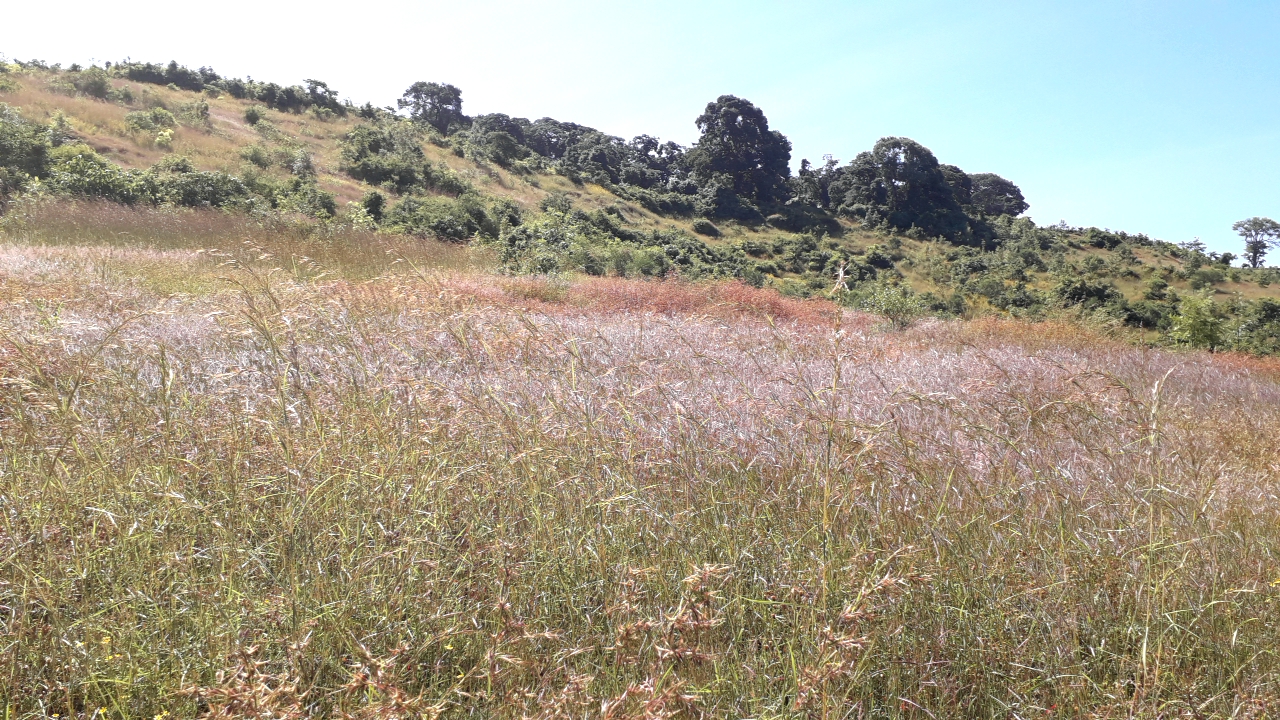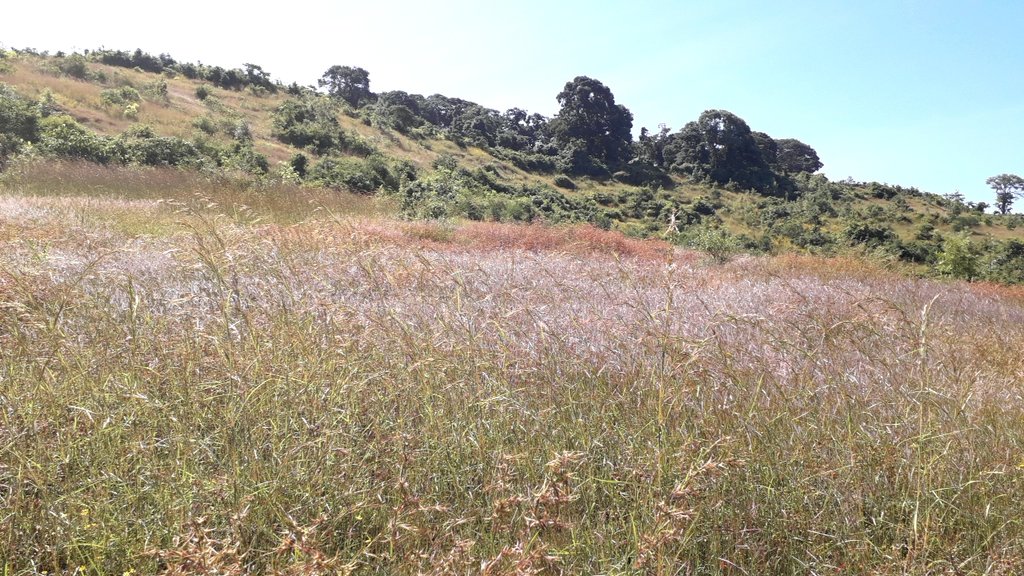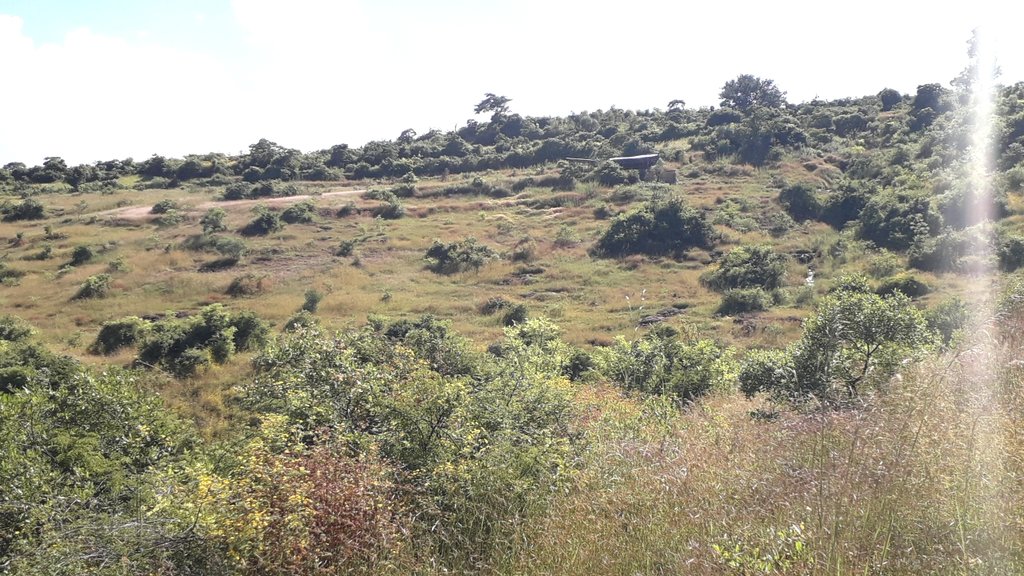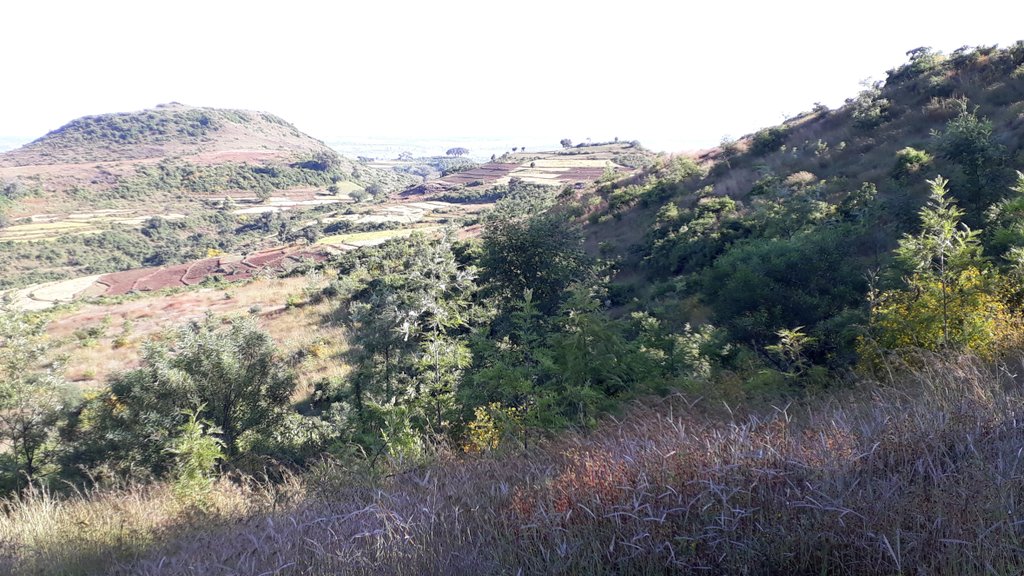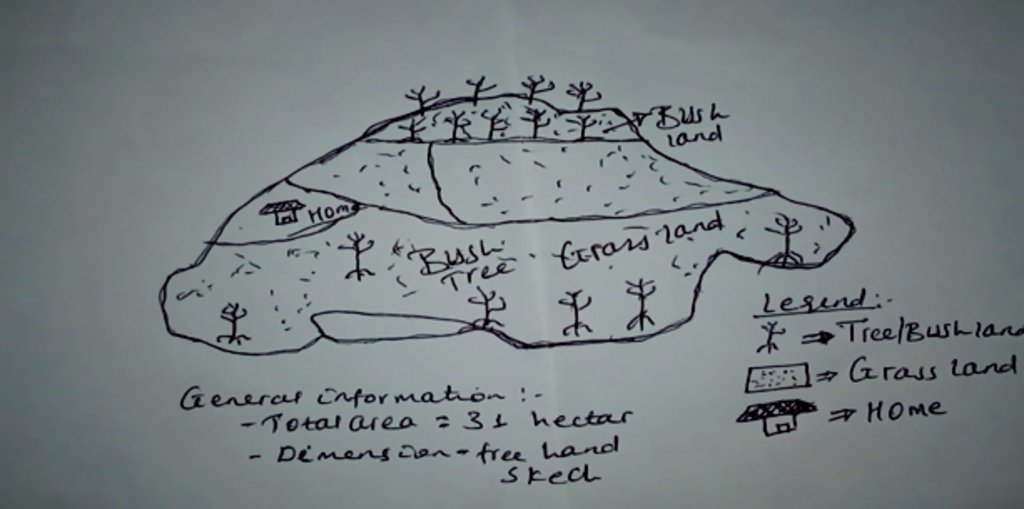Closed Area Management in Abagerima Learning Watershed [埃塞俄比亚]
- 创建:
- 更新:
- 编制者: Melese Bililign
- 编辑者: –
- 审查者: Tatenda Lemann
Closed area management
technologies_4134 - 埃塞俄比亚
查看章节
全部展开 全部收起1. 一般信息
1.2 参与该技术评估和文件编制的资源人员和机构的联系方式
有助于对技术进行记录/评估的项目名称(如相关)
Carbon Benefits Project (CBP)有助于对技术进行记录/评估的机构名称(如相关)
Water and Land Resource Centre (WLRC) - 埃塞俄比亚有助于对技术进行记录/评估的机构名称(如相关)
CDE Centre for Development and Environment (CDE Centre for Development and Environment) - 瑞士1.3 关于使用通过WOCAT记录的数据的条件
编制者和关键资源人员接受有关使用通过WOCAT记录数据的条件。:
是
1.4 所述技术的可持续性声明
这里所描述的技术在土地退化方面是否存在问题,导致无法被认为是一种可持续的土地管理技术?:
否
2. SLM技术的说明
2.1 技术简介
技术定义:
Closed area management is an area within a watershed into which human and livestock access is limited, and the area is left for natural recovery of vegetation and soil. Management relates to activities by the community to ensure such protection and to support regeneration, such as constructing drainage and retention structures, selective bush removal, regular grass cutting, occasional tree planting, and organisation of economic activities like grass cutting.
2.2 技术的详细说明
说明:
1. The closed area management technology is applied within Abagerima Learning Watershed of the Water and Land Resource Centre project.
2. In the area closures, community-based participatory management is applied to recover degraded areas.
3. The area is closed from agricultural activities and livestock grazing, while water harvesting and drainage structures are constructed, like small trenches and cut-off drains.
4. Natural grasses are regularly cut and carried, and selective trees are planted.
5. Forage growth for animal feed is encouraged, thereby reducing soil erosion, storing water, reducing soil loss, and avoiding conflicts with down-stream users.
6. The community is committed and responsible for closed area management, such as construction of trenches for water drainage and harvesting, plantation of trees, and to reduce soil erosion. The communities of the Abagerima Learning Watershed are very happy to manage their closed areas and equally share the grass biomass, and later on selective trees.
7. As a consequence, forage biomass has been increasing over the past 6 years and is regularly cut and carried, while indigenous and introduced trees are growing.
8. Through these activities, heavily degraded and overgrazed land could be transformed into productive land.
2.3 技术照片
关于照片的一般说明:
The photos were all taken during field work on 24 October 2018, while several technologies were assessed by different compilers. In the Abagerima area a full watershed was developed in 2013 by the Water and Land Resource Centre, Addis Ababa University and Centre for Development and Environment (CDE), University of Bern, funded by Swiss Development Cooperation and its Ethiopian partners.
2.5 已应用该技术的、本评估所涵盖的国家/地区/地点
国家:
埃塞俄比亚
区域/州/省:
Amhara Region, West Gojam Zone, Bahir Dar Zurya
有关地点的进一步说明:
the area is near Bahir Dar regional capital
具体说明该技术的分布:
- 均匀地分布在一个区域
如果技术均匀分布在一个区域,则指定覆盖的区域(单位为平方千米):
0.306
如果不知道精确的区域,请注明大致覆盖的区域:
- 0.1-1 平方千米
技术现场是否位于永久保护区?:
否
Map
×2.6 实施日期
注明实施年份:
2012
如果不知道确切的年份,请说明大概的日期:
- 不到10年前(最近)
2.7 技术介绍
详细说明该技术是如何引入的:
- 通过项目/外部干预
注释(项目类型等):
The Water and Land Resource Centre was highly involved in this area as one of its Learning Watersheds, and area closure was an element integrated into the landscape to protect and managed the area by using cut & carry system.
3. SLM技术的分类
3.1 该技术的主要目的
- 改良生产
- 减少、预防、恢复土地退化
- 保护生态系统
- 结合其他技术保护流域/下游区域
- 保持/提高生物多样性
- 创造有益的经济影响
- 创造有益的社会影响
3.2 应用该技术的当前土地利用类型
同一土地单元内混合使用的土地::
是
具体说明混合土地使用(作物/放牧/树木):
- 农林业

牧场
集约放牧/饲料生产:
- 收割和携带/零放牧
动物类型:
- 牛 - 奶制品
- 牛 - 非奶牛牛肉
- 牛 - 非乳制品工作
- 山羊
- 马
- 骡子和驴
- 家禽
- 绵羊
- Cattle (differentiation between different types of cattles is difficult)
是否实行作物与牲畜的综合管理?:
是
如果是,请具体说明:
trees like Cordia African,Crtonemacrotathes, Vices Vasta, Gravilia Robusta. crops like ; Maize, Teff, Figer milat, Mango, Avocado, coffee, Rhahimes(gesho). pegenpea, saspania,Napire grass, Local grass.
产品和服务:
- 肉类
- 奶类
- 外皮/兽皮
- 交通工具/役畜
品种:
牛 - 非奶牛牛肉
计数:
1656
品种:
绵羊
计数:
284
品种:
山羊
计数:
186
品种:
马
计数:
30
品种:
骡子和驴
计数:
605

森林/林地
树木类型:
- 阿拉伯胶树
- 银桦
以上的树木是落叶树还是常绿树?:
- 混合落叶或常绿
产品和服务:
- 薪材
- 自然保持/保护
注释:
Livestock population:
Because it is not possible to list more than 5 different livestock for its "populations" the population of poultry is missing (1539 chicken)
3.3 由于技术的实施,土地使用是否发生了变化?
由于技术的实施,土地使用是否发生了变化?:
- 是(请在技术实施前填写以下有关土地利用的问题)
同一土地单元内混合使用的土地::
是
具体说明混合土地使用(作物/放牧/树木):
- 农林业

牧场
粗放式放牧:
- 经营牧场
动物类型:
- 牛 - 奶制品
- 牛 - 非奶牛牛肉
- 牛 - 非乳制品工作
- 山羊
- 马
- 骡子和驴
- 家禽
- 绵羊
是否实行作物与牲畜的综合管理?:
是
如果是,请具体说明:
trees like Cordia African,Crtonemacrotathes, Vices Vasta, Gravilia Robusta. crops like ; Maize, Teff, Figer milat, Mango, Avocado, coffee, Rhahimes(gesho). pegenpea, saspania,Napire grass, Local grass.
3.4 供水
该技术所应用土地的供水:
- 雨养
3.5 该技术所属的SLM组
- 农业林学
- 区域封闭(停止使用,支持恢复)
3.6 包含该技术的可持续土地管理措施

植物措施
- V1:乔木和灌木覆盖层
- V2:草和多年生草本植物

结构措施
- S3:分级沟渠、渠道、水道
- S4:平沟、坑

管理措施
- M2:改变管理/强度级别
- M3:根据自然和人文环境进行布局
3.7 该技术强调的主要土地退化类型

土壤水蚀
- Wt:表土流失/地表侵蚀

物理性土壤退化
- Pc:压实

生物性退化
- Bc:植被覆盖的减少
- Bh:栖息地丧失
- Bq:数量/生物量减少
- Bs:质量和物种组成/多样性的下降
- Bl:土壤寿命损失

水质恶化
- Hs:地表水良变化
3.8 防止、减少或恢复土地退化
具体数量名该技术与土地退化有关的目标:
- 防止土地退化
- 修复/恢复严重退化的土地
4. 技术规范、实施活动、投入和成本
4.1 该技术的技术图纸
技术规范(与技术图纸相关):
The drawing is a free-hand sketch of the area closure near Laguna Giyorgis Church in Abagerima Learning Watershed.
The boarder of the closed area consists of cut off drains, forests, roads and croplands.
作者:
Melese Blilign, Bekalu Bitew
日期:
24/10/2018
4.2 有关投入和成本计算的一般信息
具体说明成本和投入是如何计算的:
- 每个技术区域
注明尺寸和面积单位:
31 ha
具体说明成本计算所用货币:
- 美元
注明雇用劳工的每日平均工资成本:
3.7
4.3 技术建立活动
| 活动 | 时间(季度) | |
|---|---|---|
| 1. | survey | October (end of rainy season) |
| 2. | planning & community awareness | October |
| 3. | preparing materials | October |
| 4. | design & layout | November |
| 5. | implementation | December (beginning of dry season) |
注释:
Community awareness was raised by frequent visits of different stakeholders to Abagerima Learning Watershed.
4.4 技术建立所需要的费用和投入
| 对投入进行具体说明 | 单位 | 数量 | 单位成本 | 每项投入的总成本 | 土地使用者承担的成本% | |
|---|---|---|---|---|---|---|
| 劳动力 | construction of trenches | person-days | 210.0 | 3.7 | 777.0 | 0.0 |
| 劳动力 | pit preparation for tree planting | numbers | 90.0 | 1.5 | 135.0 | 0.0 |
| 设备 | hand tools | numbers | 240.0 | 2.8 | 672.0 | 0.0 |
| 植物材料 | tree seedlings | numbers | 106.0 | 1.5 | 159.0 | 50.0 |
| 植物材料 | grass and legume seeds | kg | 200.0 | 22.0 | 4400.0 | 50.0 |
| 技术建立所需总成本 | 6143.0 | |||||
| 技术建立总成本,美元 | 6143.0 | |||||
如果土地使用者负担的费用少于100%,请注明由谁负担其余费用:
Water and Land Resource Centre (WLRC), Agricultural Office and in the Abagerima watershed the communities are involved in all types of SLM activities
4.5 维护/经常性活动
| 活动 | 时间/频率 | |
|---|---|---|
| 1. | grass cutting | once per year |
| 2. | bush clearing | irregular |
4.6 维护/经常性活动所需要的费用和投入(每年)
| 对投入进行具体说明 | 单位 | 数量 | 单位成本 | 每项投入的总成本 | 土地使用者承担的成本% | |
|---|---|---|---|---|---|---|
| 劳动力 | grass cutting | person-days | 150.0 | 3.7 | 555.0 | 100.0 |
| 劳动力 | bush clearing | person-days | 20.0 | 3.7 | 74.0 | 100.0 |
| 技术维护所需总成本 | 629.0 | |||||
| 技术维护总成本,美元 | 629.0 | |||||
4.7 影响成本的最重要因素
描述影响成本的最决定性因素:
Establishment of the technology at the initial stage (digging of trenches, cut-off drains and waterways) causes high costs.
5. 自然和人文环境
5.1 气候
年降雨量
- < 250毫米
- 251-500毫米
- 501-750毫米
- 751-1,000毫米
- 1,001-1,500毫米
- 1,501-2,000毫米
- 2,001-3,000毫米
- 3,001-4,000毫米
- > 4,000毫米
指定年平均降雨量(若已知),单位为mm:
1350.00
注明所考虑的参考气象站名称:
Abagerima Learning Watershed meteo station
农业气候带
- 半湿润
5.2 地形
平均坡度:
- 水平(0-2%)
- 缓降(3-5%)
- 平缓(6-10%)
- 滚坡(11-15%)
- 崎岖(16-30%)
- 陡峭(31-60%)
- 非常陡峭(>60%)
地形:
- 高原/平原
- 山脊
- 山坡
- 山地斜坡
- 麓坡
- 谷底
垂直分布带:
- 0-100 m a.s.l.
- 101-500 m a.s.l.
- 501-1,000 m a.s.l.
- 1,001-1,500 m a.s.l.
- 1,501-2,000 m a.s.l.
- 2,001-2,500 m a.s.l.
- 2,501-3,000 m a.s.l.
- 3,001-4,000 m a.s.l.
- > 4,000 m a.s.l.
说明该技术是否专门应用于:
- 不相关
5.3 土壤
平均土层深度:
- 非常浅(0-20厘米)
- 浅(21-50厘米)
- 中等深度(51-80厘米)
- 深(81-120厘米)
- 非常深(> 120厘米)
土壤质地(表土):
- 粗粒/轻(砂质)
- 中粒(壤土、粉土)
土壤质地(地表以下> 20厘米):
- 粗粒/轻(砂质)
表土有机质:
- 中(1-3%)
- 低(<1%)
5.4 水资源可用性和质量
地下水位表:
5-50米
地表水的可用性:
好
水质(未处理):
不良饮用水(需要处理)
水质请参考::
地下水和地表水
水的盐度有问题吗?:
否
该区域正在发生洪水吗?:
否
关于水质和水量的注释和进一步规范:
Both surface & ground water availabilities are small in March & April at the end of the dry season.
5.5 生物多样性
物种多样性:
- 中等
栖息地多样性:
- 低
5.6 应用该技术的土地使用者的特征
定栖或游牧:
- 定栖的
生产系统的市场定位:
- 混合(生计/商业)
非农收入:
- 低于全部收入的10%
相对财富水平:
- 平均水平
个人或集体:
- 团体/社区
机械化水平:
- 手工作业
性别:
- 女人
- 男人
土地使用者的年龄:
- 青年人
- 中年人
5.7 应用该技术的土地使用者使用的平均土地面积
- < 0.5 公顷
- 0.5-1 公顷
- 1-2 公顷
- 2-5公顷
- 5-15公顷
- 15-50公顷
- 50-100公顷
- 100-500公顷
- 500-1,000公顷
- 1,000-10,000公顷
- > 10,000公顷
这被认为是小规模、中规模还是大规模的(参照当地实际情况)?:
- 小规模的
注释:
The area of land ownership is of less than 1 ha for the majority, but few people have up to 2 ha of cultivated land.
5.8 土地所有权、土地使用权和水使用权
土地所有权:
- 社区/村庄
- 个人,有命名
土地使用权:
- 社区(有组织)
- 个人
用水权:
- 自由进入(无组织)
- 个人
5.9 进入服务和基础设施的通道
健康:
- 贫瘠
- 适度的
- 好
教育:
- 贫瘠
- 适度的
- 好
技术援助:
- 贫瘠
- 适度的
- 好
就业(例如非农):
- 贫瘠
- 适度的
- 好
市场:
- 贫瘠
- 适度的
- 好
能源:
- 贫瘠
- 适度的
- 好
道路和交通:
- 贫瘠
- 适度的
- 好
饮用水和卫生设施:
- 贫瘠
- 适度的
- 好
金融服务:
- 贫瘠
- 适度的
- 好
6. 影响和结论性说明
6.1 该技术的现场影响
社会经济效应
生产
作物生产
作物质量
饲料生产
饲料质量
畜牧生产
木材生产
森林/林地质量
非木材林业生产
产品多样性
生产区域
土地管理
能源生产
水资源可用性和质量
饮用水的可用性
饮用水的质量
家畜用水的可用性
家畜用水的质量
灌溉用水的可用性
灌溉用水的质量
灌溉用水需求
收入和成本
农业收入
收入来源的多样性
经济差异
工作量
社会文化影响
食品安全/自给自足
健康状况
土地使用权/用水权
文化机会
娱乐机会
社区机构
国家机构
SLM/土地退化知识
冲突缓解
社会经济弱势群体的情况
生态影响
水循环/径流
水量
水质
水的回收/收集
地表径流
多余水的排放
地下水位/含水层
蒸发
土壤
土壤水分
土壤覆盖层
土壤流失
土壤堆积
土壤结壳/密封
土壤压实
养分循环/补给
盐度
土壤有机物/地下C
酸度
生物多样性:植被、动物
植被覆盖
生物量/地上C
植物多样性
外来入侵物种
动物多样性
有益物种
栖息地多样性
害虫/疾病控制
减少气候和灾害风险
洪水影响
滑坡/泥石流
干旱影响
飓风、暴雨的影响
碳和温室气体的排放
火灾风险
风速
微气候
6.2 该技术的场外影响已经显现
水资源可用性
旱季稳定可靠的水流
下游洪水
下游淤积
地下水/河流污染
缓冲/过滤能力
风力搬运沉积物
对邻近农田的破坏
对公共/私人基础设施的破坏
温室气体的影响
6.3 技术对渐变气候以及与气候相关的极端情况/灾害的暴露和敏感性(土地使用者认为的极端情况/灾害)
渐变气候
渐变气候
| 季节 | 增加或减少 | 该技术是如何应对的? | |
|---|---|---|---|
| 年温度 | 增加 | 非常好 | |
| 季节性温度 | 冬季 | 增加 | 非常好 |
| 年降雨量 | 非常好 |
气候有关的极端情况(灾害)
气象灾害
| 该技术是如何应对的? | |
|---|---|
| 局地暴雨 | 非常好 |
| 局地雷暴 | 非常好 |
生物灾害
| 该技术是如何应对的? | |
|---|---|
| 流行病 | 非常好 |
| 昆虫/蠕虫侵扰 | 非常好 |
6.4 成本效益分析
技术收益与技术建立成本相比如何(从土地使用者的角度看)?
短期回报:
积极
长期回报:
非常积极
技术收益与技术维护成本/经常性成本相比如何(从土地使用者的角度看)?
短期回报:
稍微积极
长期回报:
非常积极
6.5 技术采用
- > 50%
如若可行,进行量化(住户数量和/或覆盖面积):
400-480 households
在所有采用这项技术的人当中,有多少人是自发的,即未获得任何物质奖励/付款?:
- 11-50%
注释:
The community got a technical adviser plus small material incentives, while there was high mobilization for SWC work.
6.6 适应
最近是否对该技术进行了修改以适应不断变化的条件?:
否
6.7 该技术的优点/长处/机会
| 土地使用者眼中的长处/优势/机会 |
|---|
|
Grass biomass increased, run off to foot slope of cultivated land decreased, water availability increased and conflicts resolved. Closed area is also used as a home for wild animals. |
| 编制者或其他关键资源人员认为的长处/优势/机会 |
|---|
| Areas are giving high forage biomass for animals. |
| Restoring the water & the vegetation cover are fine. |
| Generally the closed areas improve the livelihoods of the community due to its economical, social & environmental advantages. |
6.8 技术的弱点/缺点/风险及其克服方法
| 土地使用者认为的弱点/缺点/风险 | 如何克服它们? |
|---|---|
| Older people complain that animals should still be allowed to openly graze. | Give continuous service for the community. |
| Trees are not fully adapt to climate, environment and use. | Select appropriate technology; reintroduce moisture harvesting structures (hillside terraces) |
| Resource allocation | Raise external support for the Learning watershed |
| 编制者或其他关键资源人员认为的弱点/缺点/风险 | 如何克服它们? |
|---|---|
| Resources allocation & sharing of benefits | Needs to be organized by group & clear bylaws for better management & sharing of resources |
7. 参考和链接
7.1 信息的方法/来源
- 实地考察、实地调查
The compiler himself is the technician assigned to the Learning Watershed, and has been working in the area for several years. Furthermore, he is currently doing field work for his master's thesis in the area.
- 与土地使用者的访谈
numerous interviews in the past
- 与SLM专业人员/专家的访谈
the compiler's colleague assisted him in compiling the information according to the QT.
(现场)数据是什么时候汇编的?:
24/10/2018
7.2 参考可用出版物
标题、作者、年份、ISBN:
none
7.3 链接到网络上的相关信息
标题/说明:
none
7.4 一般注释
The WOCAT QT is an interesting database & very simple questionniare for a SLM technician.
链接和模块
全部展开 全部收起链接
无链接
模块
无模块


